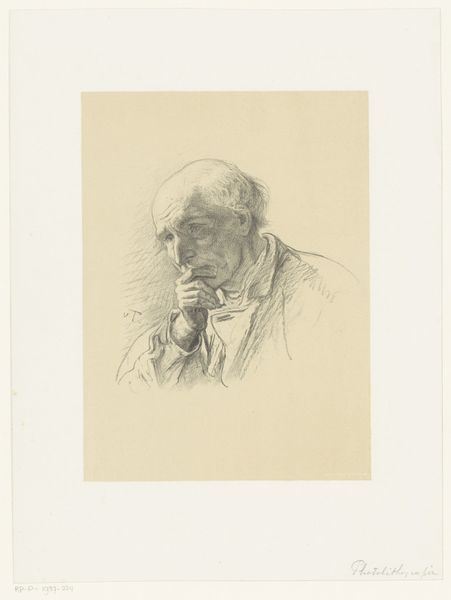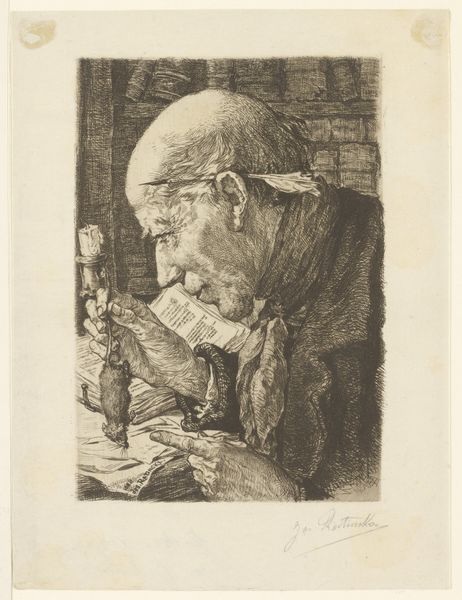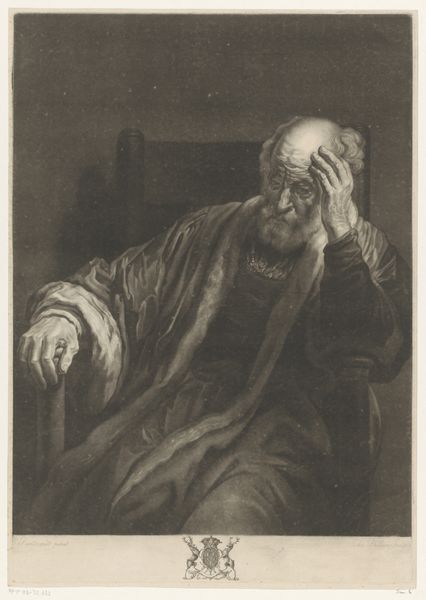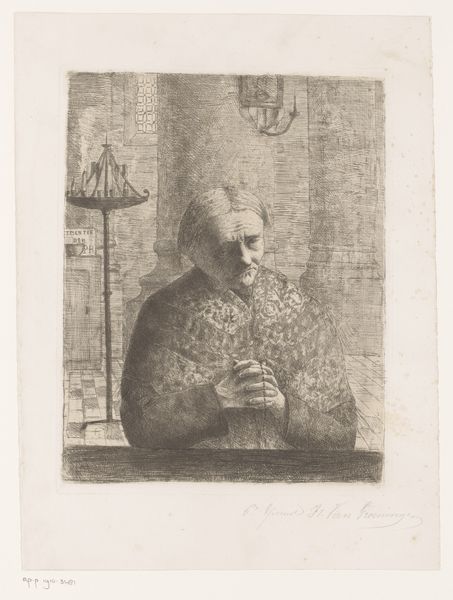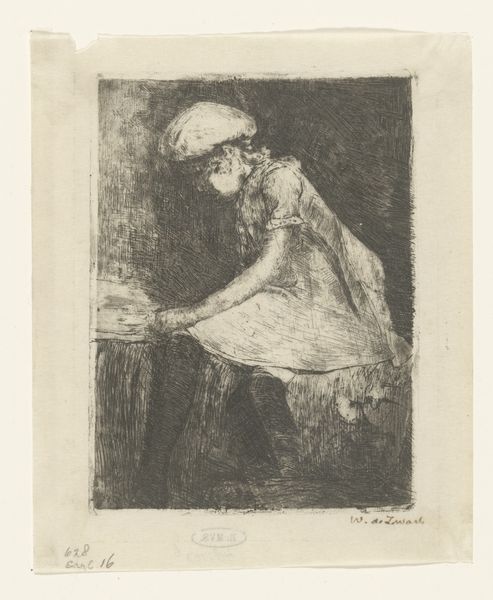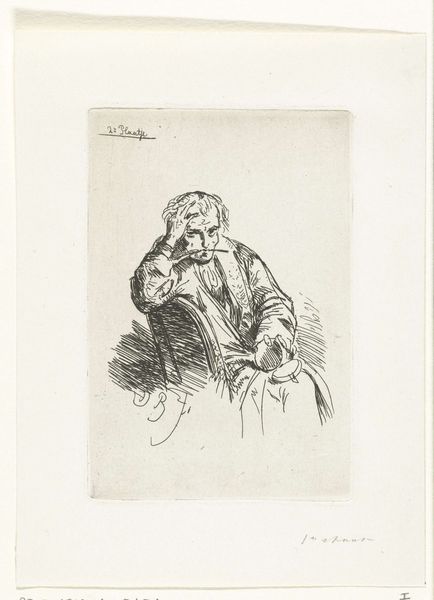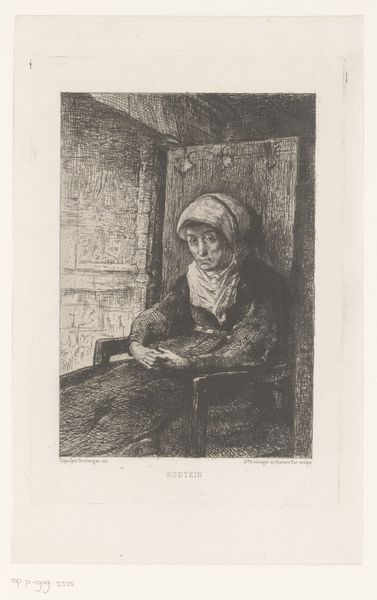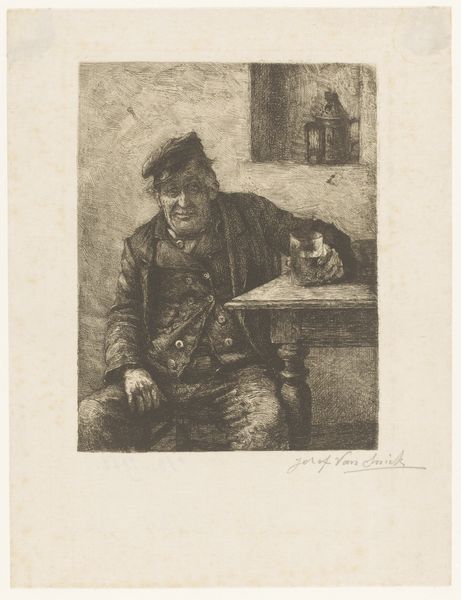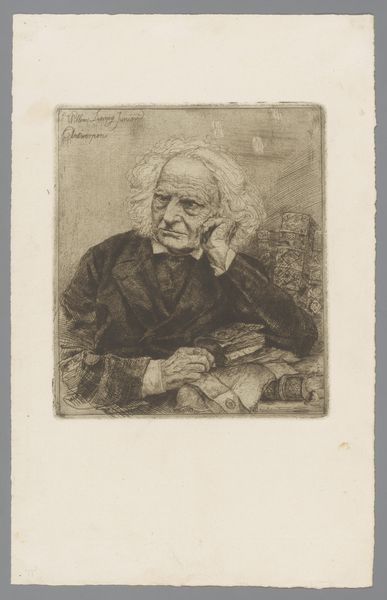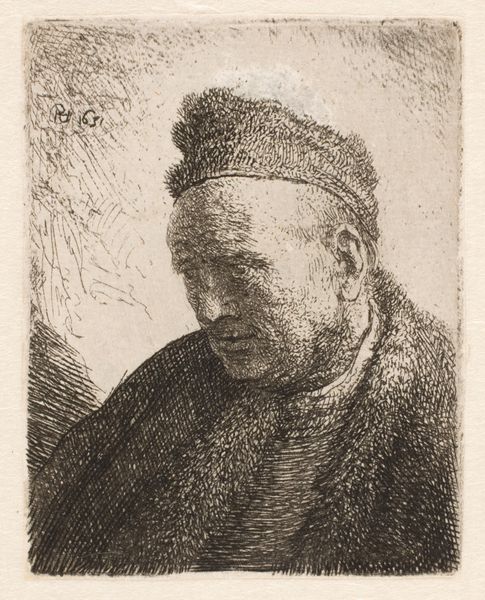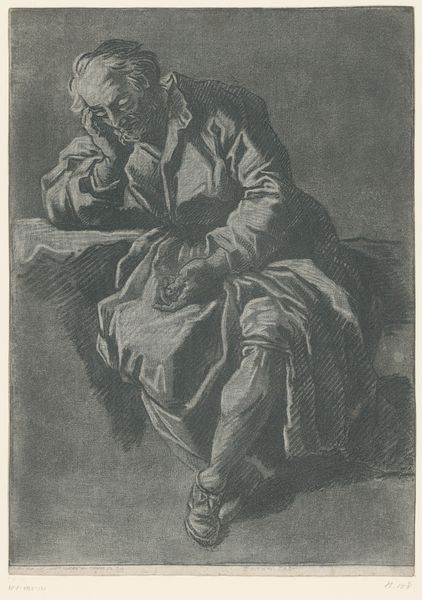
#
print photography
#
photo of handprinted image
#
picture layout
#
wedding photograph
#
photo restoration
#
photo element
#
expressing emotion
#
joyful generate happy emotion
#
strong emotion
#
photo layout
Dimensions: height 318 mm, width 237 mm
Copyright: Rijks Museum: Open Domain
Editor: This is "Pijp rokende oude man met slaapmuts," or "Old Man Smoking a Pipe with a Nightcap," by Charles Boom, made in 1880. It looks like a print of some kind. I'm struck by how it captures a quiet, intimate moment. What can you tell me about it? Curator: This work presents us with an interesting study of the late 19th-century European fascination with representations of age and working-class leisure. How do you think the social context of the time might have influenced Boom's choice to depict this particular subject? Editor: I guess there was probably growing interest in ordinary people, and maybe a romanticizing of simple, rustic life in contrast to industrialization? Curator: Precisely. And look at the deliberate rendering of the man’s features – the lines etched around his eyes, the detail in his clothing. Boom isn’t simply capturing an image; he’s constructing a narrative about labor and contentment, appealing to a bourgeois audience likely removed from this reality. Notice too how this image might reinforce particular stereotypes of the working class through presentation. Does that strike you at all? Editor: It does. I see that. I mean, there’s something dignified but also passive about the man's pose. Maybe it was what the public wanted to believe about the working class? Hardworking, but simple in their needs? Curator: Exactly! These images often performed an important function, solidifying specific societal views and, at times, social control. What seemed like harmless portrayals were enmeshed in the sociopolitical. Editor: Wow, that really changes how I see this image. It's more complex than just a portrait of an old man smoking. Curator: Indeed. Examining art within its historical context reveals hidden narratives and the subtle power dynamics at play.
Comments
No comments
Be the first to comment and join the conversation on the ultimate creative platform.
